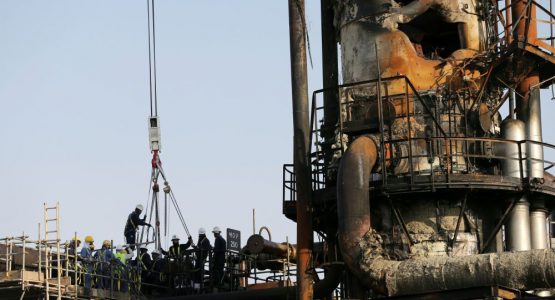
Attack on Saudi oil fields possibly staged by militants who fled Syria
On 14 September, Saudi Aramco’s oil facilities were hit by drones, cutting Riyadh’s daily net oil output in half and suspending the production of more than 5 million barrels of oil per day. Yemen’s Houthis claimed the attacks but the US put the blame on Iran. Tehran denied the allegations.
The attacks on Saudi oil facilities were possibly staged by militants who fled Syria and went to Iraq and other countries, the CEO of Rosneft, Igor Sechin, said at the Eurasian Economic Forum.
“The Russian Federation’s successful actions in Syria have urged some of the militant terrorists to dislocate, forcing them into neighboring countries, including Iraq. Presumably, they have initiated the recent attack on oil and gas facilities in Saudi Arabia,” Sechin said on Thursday at the Eurasian Economic Forum.
Last month, Saudi Aramco’s Abqaiq and Khurais oil processing facilities were hit by drones, suspending the production of some 5.7 million barrels of oil per day. Although Yemen’s Houthis claimed responsibility for the attacks, Washington blamed them on Tehran. The latter denied the allegations.
According to Mr Sechin, the United States became the main beneficiary of sanctions against Iran, increasing oil supplies to the EU 150 per cent in 2018.
“In 2018, the United States increased its oil supplies to the EU 2.5-fold, from 9 million to 23 million tonnes. It became the main beneficiary of sanctions on the European market,” Sechin said.
The United States unilaterally withdrew from the Joint Comprehensive Plan of Action (JCPOA), also known as Iran nuclear deal, in 2018 and re-imposed its economic sanctions against Iran. A year later, Tehran said that it would partially suspend its obligations under the deal and resume uranium enrichment unless other signatories to the deal fail to help it bypass US sanctions.
Source: Sputnik





